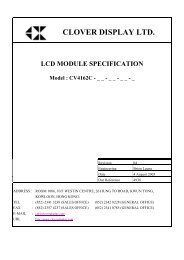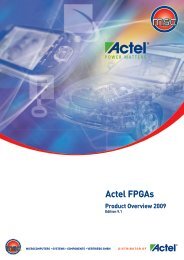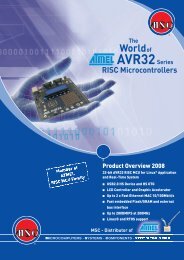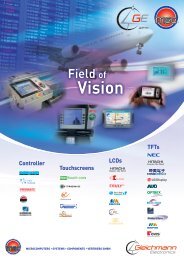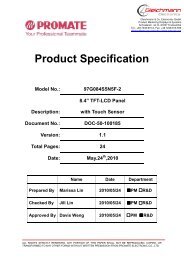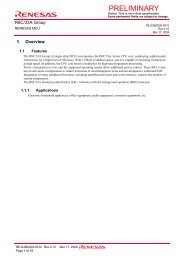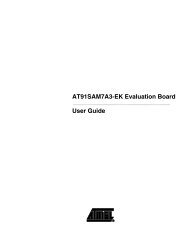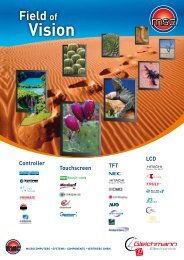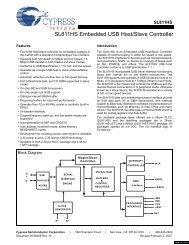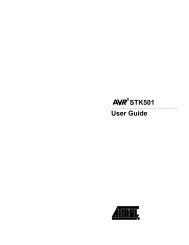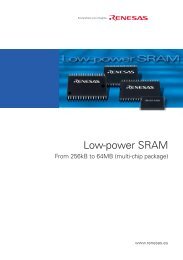17. Added note for RSTDISBL Fuse in Table 87 on page 223.18. Updated drawings in “Packaging Information” on page 14.Changes from Rev.2486H-09/02 toRev. 2486I-12/02Changes from Rev.2486G-09/02 toRev. 2486H-09/02Changes from Rev.2486F-07/02 toRev. 2486G-09/02Changes from Rev.2486E-06/02 toRev. 2486F-07/021. Added errata for Rev D, E, and F on page 17.1. Changed the Endurance on the Flash to 10,000 Write/Erase Cycles.1. Updated Table 103, “ADC Characteristics,” on page 248.1. Changes in “Digital Input Enable and Sleep Modes” on page 55.2. Addition of OCS2 in “MOSI/OC2 – Port B, Bit 3” on page 59.3. The following tables have been updated:Table 51, “CPOL and CPHA Functionality,” on page 132, Table 59, “UCPOL Bit Settings,”on page 158, Table 72, “Analog Comparator Multiplexed Input(1),” on page 195, Table 73,“ADC Conversion Time,” on page 200, Table 75, “Input Channel Selections,” on page 206,and Table 84, “Explanation of Different Variables used in Figure 103 and the Mapping to theZ-pointer,” on page 221.4. Changes in “Reading the Calibration Byte” on page 234.5. Corrected Errors in Cross References.Changes from Rev.2486D-03/02 toRev. 2486E-06/021. Updated Some Preliminary Test Limits and Characterization DataThe following tables have been updated:Table 15, “Reset Characteristics,” on page 38, Table 16, “Internal Voltage Reference Characteristics,”on page 42, DC Characteristics on page 242, Table , “ADC Characteristics,” onpage 248.2. Changes in External Clock FrequencyAdded the description at the end of “External Clock” on page 32.Added period changing data in Table 99, “External Clock Drive,” on page 244.3. Updated TWI ChapterMore details regarding use of the TWI bit rate prescaler and a Table 65, “TWI Bit Rate Prescaler,”on page 173.Changes from Rev.2486C-03/02 toRev. 2486D-03/021. Updated Typical Start-up Times.The following tables has been updated:Table 5, “Start-up Times for the Crystal Oscillator Clock Selection,” on page 28, Table 6,“Start-up Times for the Low-frequency Crystal Oscillator Clock Selection,” on page 28,22<strong>ATmega8</strong>(L)2486SS–AVR–08/07
<strong>ATmega8</strong>(L)Table 8, “Start-up Times for the External RC Oscillator Clock Selection,” on page 29, andTable 12, “Start-up Times for the External Clock Selection,” on page 32.2. Added “<strong>ATmega8</strong> Typical Characteristics” on page 249.Changes from Rev.2486B-12/01 toRev. 2486C-03/021. Updated TWI Chapter.More details regarding use of the TWI Power-down operation and using the TWI as Masterwith low TWBRR values are added into the datasheet.Added the note at the end of the “Bit Rate Generator Unit” on page 170.Added the description at the end of “Address Match Unit” on page 170.2. Updated Description of OSCCAL Calibration Byte.In the datasheet, it was not explained how to take advantage of the calibration bytes for 2, 4,and 8 MHz Oscillator selections. This is now added in the following sections:Improved description of “Oscillator Calibration Register – OSCCAL” on page 31 and “CalibrationByte” on page 225.3. Added Some Preliminary Test Limits and Characterization Data.Removed some of the TBD’s in the following tables and pages:Table 3 on page 26, Table 15 on page 38, Table 16 on page 42, Table 17 on page 44, “TA =-40×C to 85×C, VCC = 2.7V to 5.5V (unless otherwise noted)” on page 242, Table 99 onpage 244, and Table 102 on page 246.4. Updated Programming Figures.Figure 104 on page 226 and Figure 112 on page 237 are updated to also reflect that AV CCmust be connected during Programming mode.5. Added a Description on how to Enter Parallel Programming Mode if RESET Pin is Disabledor if External Oscillators are Selected.Added a note in section “Enter Programming Mode” on page 228.2486SS–AVR–08/0723



